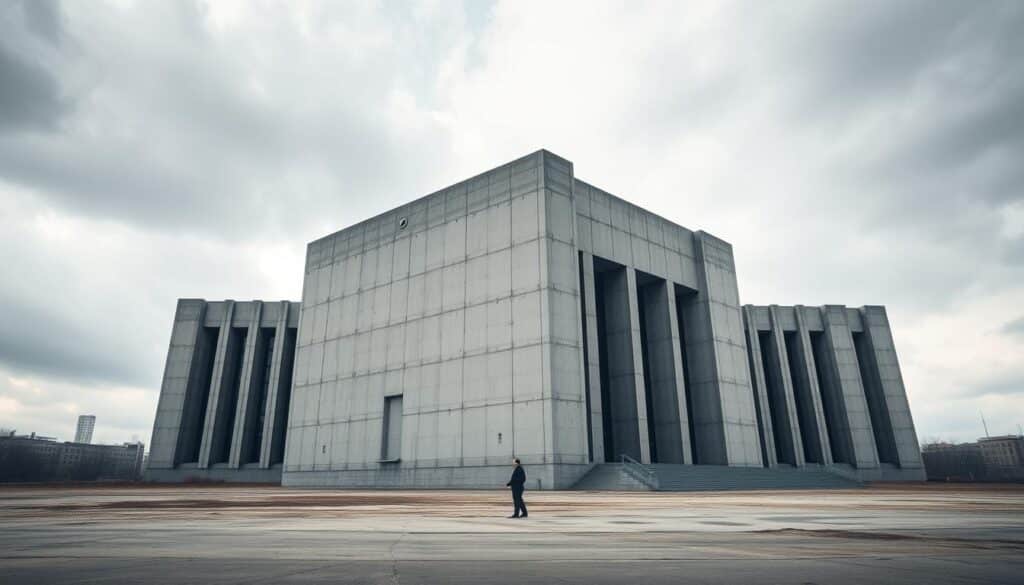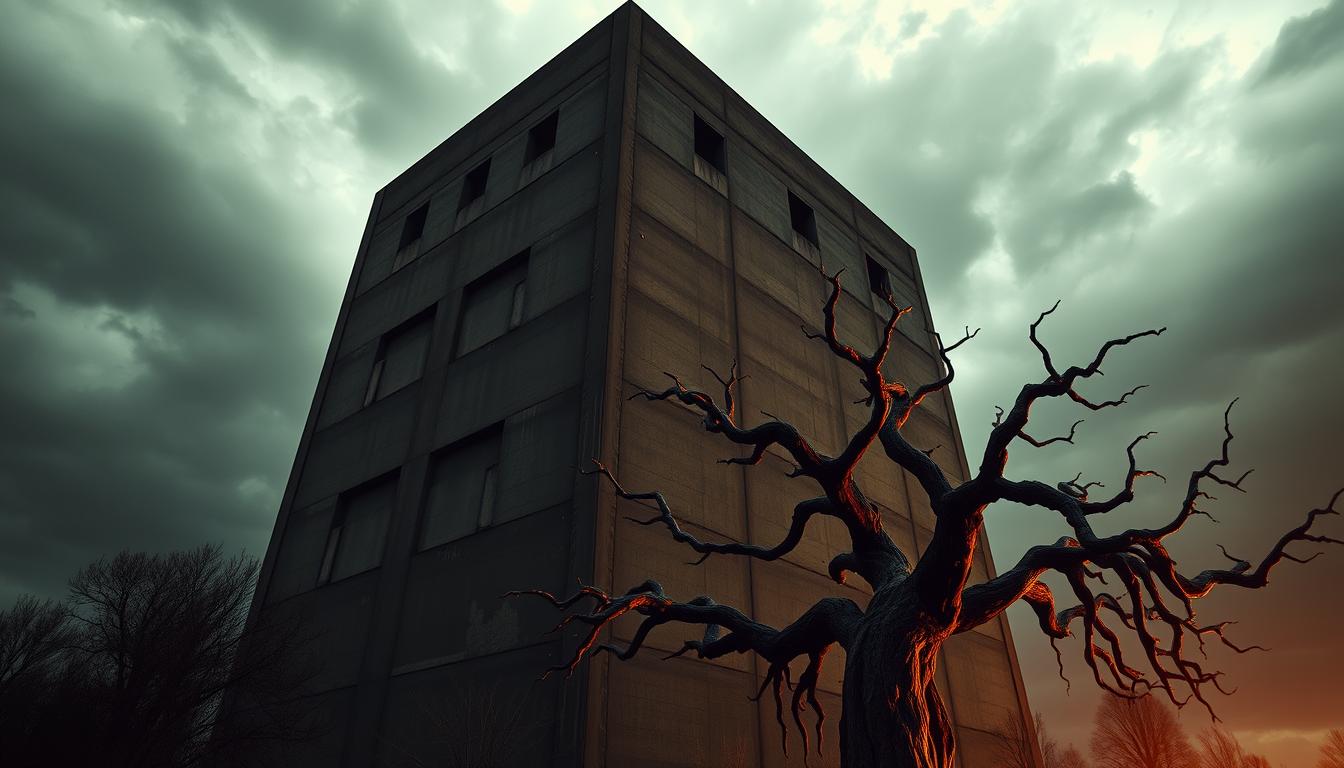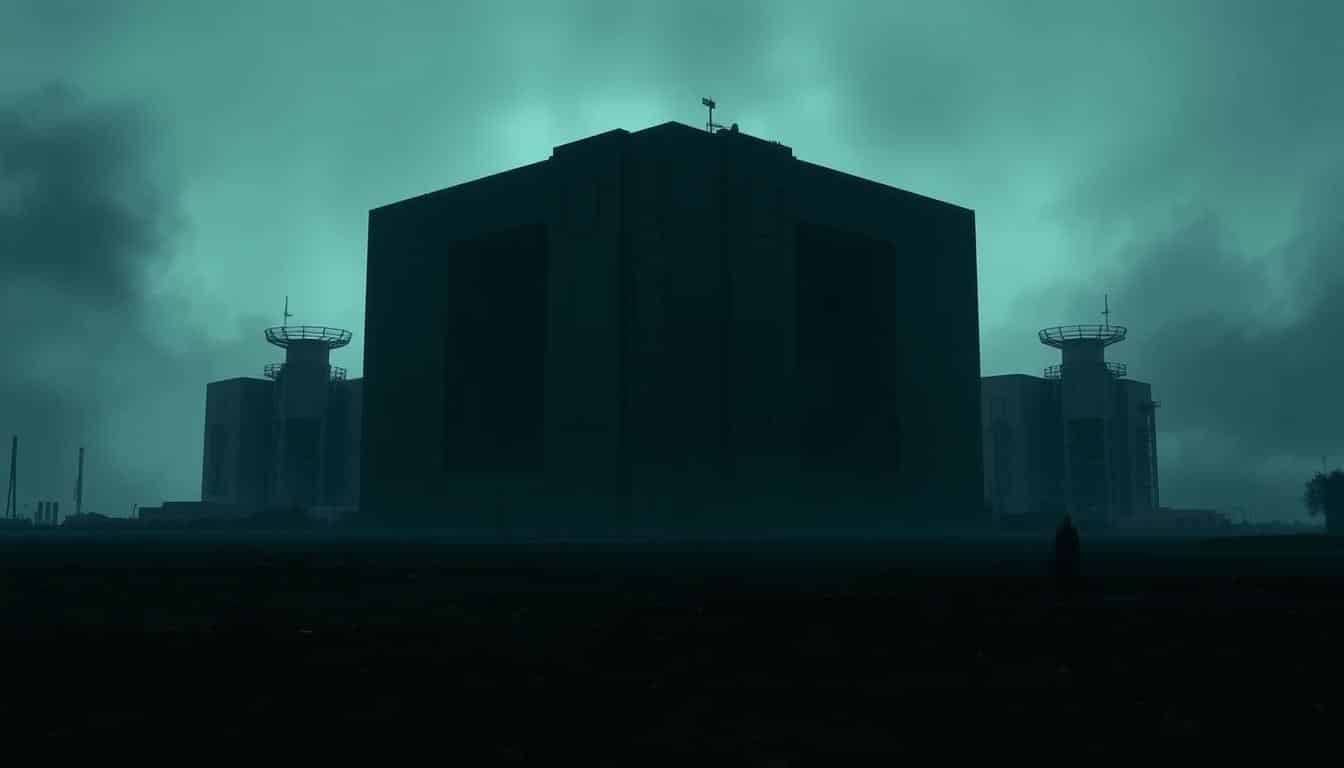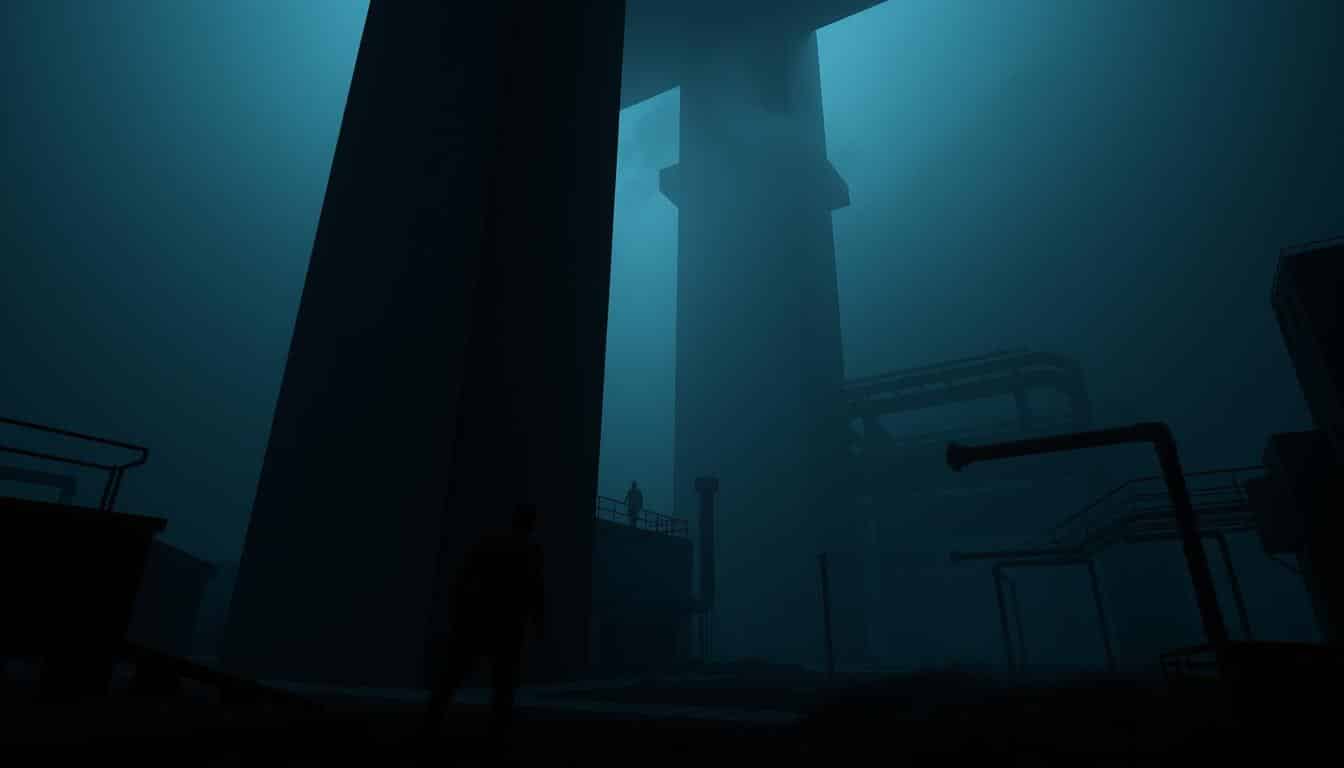Soviet Brutalism stands out with its bold use of concrete. It greatly affects cultural scenes, especially horror. These strong buildings create a backdrop of loneliness and suppression.
This piece will discuss Soviet Brutalist design’s role in horror. It shows how filmmakers use these settings to boost fear and suspense. This mix of architecture and emotion adds depth to stories, exploring deep feelings found in movies.
The Allure of Soviet Brutalist Design in Horror Experiences
The link between Soviet Brutalism and horror is truly intriguing. This style’s bold, bare look can make us feel many things, from wonder to unease. Its distinct features create a special vibe that horror fans love. By diving into what makes this design stand out, we can see why it’s so powerful in scary stories.
Defining Soviet Brutalism
Soviet Brutalism started around the mid-20th century. It’s known for big, concrete buildings and a no-frills approach. This style puts function over form, sometimes missing out on beauty. Key aspects of Soviet Brutalism are:
- Geometric shapes
- Raw, exposed concrete
- A sense of monumentality
These traits create a feeling of loneliness and emptiness. In horror, such moods boost the tension and craft spooky tales. This makes Soviet Brutalism a great choice for horror creators.
Key Characteristics of Brutalist Architecture
Brutalism’s raw, honest look brings a special kind of dread. Its simplicity is a stark change from the usual gothic or old-world horror scenes. This new fear reflects today’s worries, turning chilly, large buildings into key parts of horror movies.

Transition of Aesthetic in Horror Cinema
The evolution of horror cinema shows a major transition in horror aesthetics. This change highlights big cultural shifts. Filmmakers now prefer modernist styles over old gothic looks. This new trend brings a fresh feel to modern horror. The simplicity and big impact of brutalist design add to the scary vibes.
The role of architecture in film is key to making us feel certain emotions. By using modern buildings, filmmakers boost feelings of fear and loneliness. The style has changed, using simple lines and concrete to make us uneasy. This is different from the complicated designs of older buildings.
This change has sparked talks about how we see fear today. Settings based on brutalist ideas create a perfect place for anxiety. As horror stories evolve, the transition in horror aesthetics helps us see how places deeply affect our feelings.
Modernist Architecture as a Background for Horror
Modernist architecture is key in making horror stories scarier. Its bold, rigid shapes contrast with typical horror scenes, enhancing feelings of loneliness and fear. In movies, brutalist buildings aren’t just backdrops. They’re like characters, adding to the story’s depth.
These buildings highlight how alone the characters feel. This makes the audience more tuned in to the story’s suspense.
Cinematic Representation of Brutalist Structures
Brutalist structures in films make the story’s emotions stronger. The empty look of these buildings adds a chilling vibe. They often symbolize characters’ inner battles, pulling viewers into an eerie mood.
This mirror effect shows what characters living there might feel. It adds a complex psychological layer to the tale.
Contrast to Traditional Horror Settings
Putting modernist architecture in horror against classic settings explores fear and loneliness deeper. Traditional horror places are warm and welcoming. But, brutalist designs are cold and hard.
This difference makes audiences experience horror in a new way. The architecture affects the story’s emotional feel. It highlights the fright found in both the setting and the characters’ experiences.
Case Studies: Films Featuring Brutalist Designs
Horror case studies show brutalist architecture is more than a backdrop. It’s key to the story and its deep themes. Two films show this well.
Analysis of “High-Rise” and Its Dystopian Elements
“High-Rise,” based on J.G. Ballard’s book, explores social breakdown in a towering building. This setting is perfect for studying the film’s take on society. The building’s design reflects the dark side of its residents. Their chaos mirrors social collapse. Its brutalist style stands out, adding feelings of loneliness and disorder.
“The Cloud of Unknowing” and Architectural Isolation
In “The Cloud of Unknowing,” a brutalist block is central to the story. It explores identity and deep worries through unique storytelling. The stark building symbolizes emptiness, affecting the characters deeply. This smart use of brutalism in film shows architecture can carry deep meanings and boost horror.
The Role of Brutalism in Evoking Fear
Brutalism, known for stark and massive structures, is key in bringing out fear. Its raw concrete and geometric shapes unsettle many. People often feel dread near these huge designs, which remind them of control and oppression.
Brutalist buildings do more than just look scary. They tap into deep worries about city life and the future. These places, with their high walls and cold materials, make us feel alone. This feeling can cause deep worry, much like in horror stories.
In stories, brutalism is more than just a setting. It helps show the fears and problems people face. By looking at these buildings, we learn how architecture can affect our deepest fears. This often leads to strong feelings.
Brutalist Structures Around the World
Brutalist architecture is found worldwide, showing off a unique style. These buildings tell a story that goes beyond their look. They blend with urban scenes, revealing how the city affects society. Structures like these stir strong feelings. They influence how people see themselves and their community.
Impact of Urban Landscapes on Psychological States
Brutalist buildings in cities lead to mixed feelings. These structures mirror social issues, making people feel alone or connected. Some find these massive buildings unsettling. Yet, others see their boldness as a source of strength. It pushes communities to think deeply about their environment.
Brutalism’s Cultural Significance in Various Countries
Different places show brutalism in special ways, shaping local stories. In France, Geneva’s Unimail building blends use with artistry. The Barbican Centre in the UK shows the mix of art and history after war. These cases highlight how brutalism tells of a society’s past and its values today.
Architectural Influence on Social Fears
Architecture reflects society’s deep fears. Styles like brutalism go beyond looks to mesh with social worries. Buildings from tough times often stir unease, becoming signs of hope and fear. Brutalism shows how design captures shared fears in cities, showing feelings of being alone and controlled.
Brutalist buildings can make people feel strongly, bringing back memories of past upset and social troubles. These places, filled with the times’ social and political meanings, highlight fears of being watched and trapped. The sharp, big shapes cast shadows that make people feel uneasy, adding to the story of life in cities.
Towns dealing with these architecture types show that where we live affects how we feel mentally and emotionally. Places made by political ideas aren’t just scenery; they help shape stories of fear and hope. In the end, architecture leaves a big mark on how society thinks about fears in city life.
Future Perspectives: Brutalism in Horror Narratives
The future of brutalism in horror is fascinating for filmmakers and authors. Urban areas are changing and social issues are getting bigger, making brutalist architecture even more interesting for horror stories. These structures can reflect fears like being alone or feeling deep worry.
Stories set in brutalist places can show the huge difference between people and big buildings of concrete. This can make readers or viewers feel trapped. Such settings make horror stories feel more intense, as they touch on deep fears in new ways.
As people get better at understanding complex stories, the way brutalist places and feelings connect will get more attention. Creators could use history to link old building styles with new horror stories. This mix could make horror books and movies more meaningful, showing how brutalism can help tell stories about today’s fears.
Conclusion
Looking at how Soviet Brutalism influences horror, we see these buildings add a lot to the feeling of fear. Their big, bold shapes make places feel eerie, fitting right into scary movie themes. This shows that modern buildings do more than look a certain way; they touch our feelings deep down when we see them in stories.
Horror stories are changing, and brutalist design is playing a bigger role in that. Its focus on large, simple structures can make us feel stuck or alone, making the story even scarier. Seeing brutalist buildings in these tales reminds us how places can shape our feelings of fear in movies and books.
Understanding the role of architecture in horror stories helps us get more from these tales. This look at brutalism encourages both viewers and those who create stories to think about how buildings affect our sense of fear. It pushes us to see how space, emotion, and storytelling mix together in new ways.



